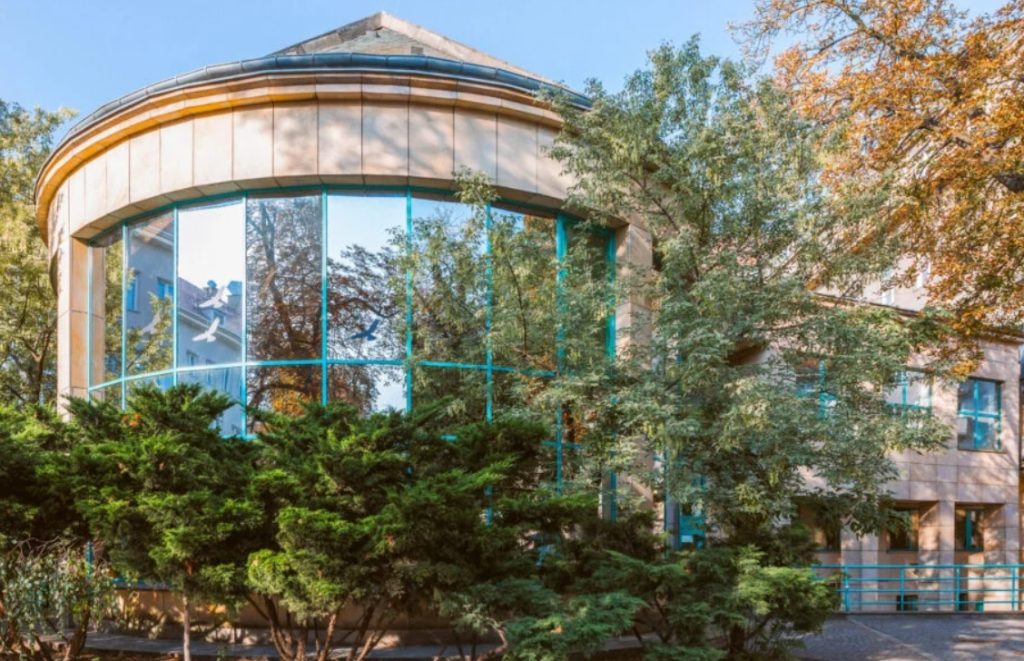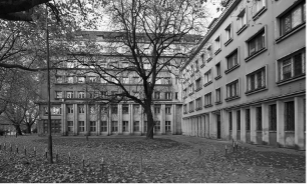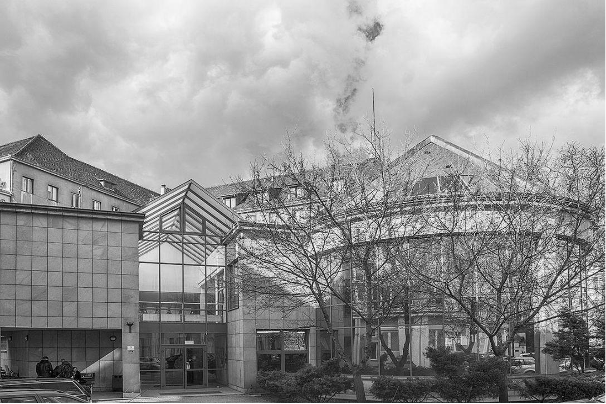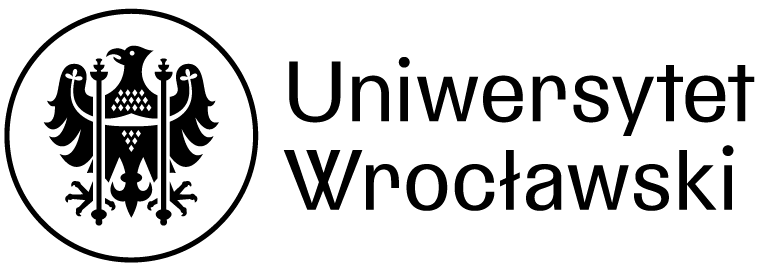
History of the Institute of Experimental Physics of the University of Wrocław
The first meeting of the Council of the freshly established Institute of Experimental Physics of the University of Wrocław (IEP UWr) was held on 27 September 1969 (it determined, among other things, its structure – the number, names, and types of didactic divisions and science and research teams, the Institute’s didactic agendas, as well as their personnel). However, personal and organisational beginnings of the Institute date as far back as the period right after the end of the Second World War, when the Faculty of Physics, Mathematics and Chemistry, institutionally shared by the University of Wrocław and Wrocław University of Science and Technology until the year 1951(when there was an administrative split of the two universities), was established. Due to the existing shortages of staff, premises, equipment, and finances, the beginnings of the work of Wrocław experimental physicists were extremely difficult. In the first period the research was conducted by a team making up the Experimental Physics Division, and then – from the year 1952 – by university physicists as part of the Experimental Physics Department. At that time, within the Experimental Physics Department, there were three independent research groups, headed by prof. dr hab. Jan Nikliborc, doc. dr hab. Bogdan Sujak, and prof. dr Jan Wesołowski, which, after the reorganisation in 1966, were formally converted into three departments: Experimental Physics, Solid State Physics, and Nuclear Physics.
The building of the Institute of Experimental Physics (ground and two storeys on the right), Wojciecha Cybulskiego st. 36. On the left is the part of the building occupied by the then PUWP Provincial Committee.
Those three departments were the basis of the Institute of Experimental Physics of the University of Wrocław established in 1969 (at that time the Institute employed 2 titular professors, 6 docents, 9 readers, 1 lecturer, 14 senior assistants, 12 assistants, 3 intern assistants). First of them was the precursor of the research conducted at the Institute in the field of surface physics – in the early 1970s a pioneer field in Poland and simultaneously only starting its development in world science. Originally, due to the existing limitations, this field was mainly based on two measurement techniques – field emission microscopy and field ion microscopy, which was already enabling surface imaging with atomic resolution. The Institute’s employees very soon reached a world class of conducted research, simultaneously establishing numerous direct contacts with foreign scientists. At the same time the chosen field of research and used techniques forced a constant broadening of knowledge and skills in producing ultra high vacuum and constructing ultra high vacuum equipment.


Institute of Experimental Physics headquarters after 1989, Maksa Borna sq. 9.
As time went on, both the Institute’s staff numbers and its equipment assets expanded. Along with the increasing financial possibilities, the Institute gradually introduced more research techniques, including many original methods designed and developed by the IEP employees. The objects of research were and remain the volumetric properties (among other things, phase transitions of known and new dielectric crystals determined by various optical and dielectric methods) as well as condensed matter surfaces (including nanostructured materials and biological objects) and atomic or nanometric scale processes, among others adsorption and growth of thin films on surfaces of metals, semiconductors, and insulators, activated thermally (e.g. surface diffusion, segregation, desorption, faceting), emissions (ions, electrons), surface chemical reactions (including catalytic properties and corrosion phenomena) at the interfaces: solid-vacuum and solid-fluid. Conducted experimental studies are effectively supplemented by theoretical research (in particular concerning electronic and atomic structure of metals, metal oxides, semiconductors, various adsorption systems, including adsorption of organic molecules) conducted at the Institute, mainly using the density functional theory. In consequence the structure of the Institute and topics of conducted research also evolved. A group was also formed to engage in the training of physics teachers, the lack of which – not only within the province of Lower Silesia – was very troublesome. Simultaneously, alongside scientific and educational work, many popularisation activities were operated. To date, the number of participants (both pre-school and school age children as well as adults) of various kinds of events (mention here can be made of the very popular Physics Circus, Lectures with demonstrations, or the Lower Silesian Festival of Science) can be confidently counted within tens of thousands.
History of the Institute also includes dramatic events – in the year 1997 the flood of the century took place in Wrocław and unfortunately, despite very good protection measures, the Institute suffered at that time quite severely (the water broke into its quarters through the unprotected basement of the State Archive adjacent to the Institute).
View of the entrance to the Institute from the courtyard
Throughout its existence, the Institute employed over 410 people and the total number of publications reached over 3200 items (the full list, also including the years before establishing the Institute – 1945-1969, when 314 articles by university experimental physicists were published, can be found at: publications). By April 2022, 169 PhDs had been promoted at the Institute, 34 people had been awarded postdoctoral degrees, and 22 people had been awarded professorships. The number of conferences organized by the Institute and their participants can be considered impressive – over the past years over a hundred conferences of various kinds have been organized, attended by at least 5 thousands people. The Institute’s employees taught and teach classes not only to students of the parent faculty but also the so-called service classes for students of other faculties of the UWr, as well many schools in Wrocław. It is now difficult to estimate their total number, but it certainly has long exceeded 20 thousands. The number of engineer’s, bachelor’s, or master’s theses completed at the Institute, according to conservative estimates, has long exceeded a thousand. All the Institute’s achievements to date and its current status is not only thanks to the Institute’s successive directors: prof. B. Sujak (1969-1974 and 1984-1987), prof. Z. Sidorski (1974-1984), prof. S. Mróz (1987-1991) prof. M. Szuszkiewicz (1991-1996), prof. J. Kołaczkiewicz (1996-1999 and 2012-2016), prof. Z. Czapla (1999 -2002), prof. A. Ciszewski (2002-2012), prof. L. Markowski (since 2016), but especially its employees, a full list of whom can be found in the Institute’s anniversary booki.
In April 2022, 6 divisions remained in the Institute’s structure (Emission Electronics Division, Nuclear and Dielectric Physics Division, Nano-optics and Nanostructures Division, Physics Education Division, Electron Spectroscopy Division along with the EC-STM Group, Surface Physics and Nanomaterials Division). The main thrusts of previous research have been maintained; however, new areas of interest have emerged, such as nano-optics, or phenomena at the solid-liquid interface studied by electrochemical scanning tunneling microscopy and cyclic voltammetry. Details of current research directions, as well as those carried out in the past, can be found in the descriptions of the individual divisions and in the aforementioned book.
April 2022.
Leszek Markowski
(Director in the years 2016-2024)
Institute of Experimental Physics
University of Wrocław

